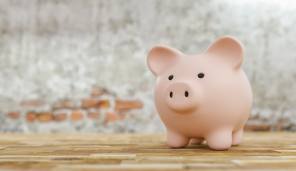

Some 1.6mn more pensioners are set to pay income tax by 2027/28 with 8.5mn pensioners expected to pay the tax in 2023/24.
AJ Bell has highlighted planning how and where to take income as well as maximising tax-free allowances will help pensioners to beat the “stealth tax raid”.
Charlene Young, pensions and savings expert at AJ Bell, said: “Soaring inflation and wages mean that the triple-locked state pension increased by another 8.5 per cent this month, taking the full flat-rate state pension to just over £11,500 a year. However, with the personal allowance still frozen at £12,570, the state pension will take up the lion’s share of that tax-free allowance.
“We’ve seen this play out in government figures that show since April 2021, more than 1.2mn more pensioners have already been dragged into the income tax net. This isn’t the end of the story, as allowances continue to be frozen, or even cut in the case of dividends.
“New analysis by House of Commons library commissioned by the Liberal Democrats estimates that another 1.2mn pensioners will be pulled into paying income tax in the 2024/25 tax year, rising to 1.6mn more by 2027/28, compared to if no freeze had been in place.”
Young suggested using Isas for tax-free income as well as maximising pension tax-free cash.
“If you’ve got a bit of your personal allowance left, a neat trick is to withdraw money from your pension to take you up to the personal allowance limit.
"For example, if you have £1,000 personal allowance left after your full state pension, you could tell your provider you want to access £1,300 in total as a blend of tax-free cash and income. The first 25 per cent (£325) will be tax-free, and the remaining £975 still falls within your tax-free personal allowance,” she added.
Young highlighted a person can still pay into their pension even if they have already accessed it and that may lower the amount of income tax they pay.
She said: “You’ll likely have a lower limit on what you can pay into your pension each year if you’ve already taken income from a private pension. This annual allowance - known as the money purchase annual allowance- will usually be £10,000 a year, but provided you don’t go over that and you’re under 75, paying into your pension could move you into a lower tax bracket as it reduces your taxable income.”
Young also said it was important for pensioners to know all the tax-breaks they are entitled to, to boost their tax-free income.
These include starting rate for savings, personal savings allowance, dividends and capital gains.
If people are in a couple, Young suggested organising finances between them can make the allowances go even further and potentially save them more tax.
She said: “If you’re married or in a civil partnership and one of you is a non-taxpayer, the marriage allowance lets them transfer 10 per cent of their personal allowance to their partner and could save you up to £252 a year in tax.
“To claim, the person receiving the extra personal allowance must be a basic-rate- 20 per cent- taxpayer at most. A little-known tip is that you can also backdate your claim for up to four tax years, if eligible. An alternative option, called the married couple’s allowance, is available for people born before April 6 1935.”
Young also pointed out it was useful for pensioners to know how they will pay any tax due.
“If you’re one of those dragged into the tax net, with some smart planning you can make sure you’re keeping as much of your extra income as possible, rather than giving it to the taxman,” she added.
alina.khan@ft.com



